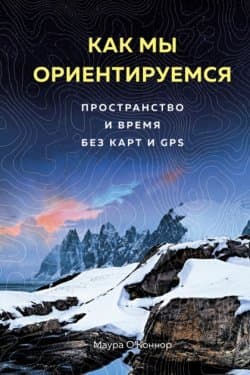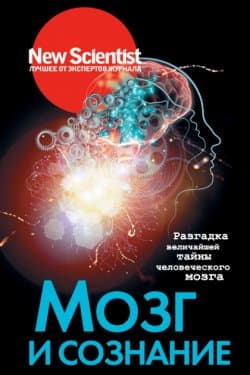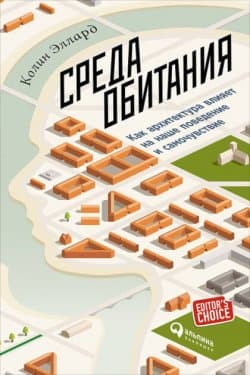Как мы ориентируемся - Маура О’Коннор (2021)
-
Год:2021
-
Название:Как мы ориентируемся
-
Автор:
-
Жанр:
-
Язык:Русский
-
Страниц:200
-
Рейтинг:
-
Ваша оценка:
Автор рассматривает вопросы, которые связаны с навыком ориентирования в пространстве у людей, животных. За счет чего животные способны мигрировать и ориентироваться с поразительной точностью? Каким образом наши предки расселились по всему миру? Маура О’Коннор задалась вопросом, что происходит, когда мы полаемся на навигацию в гаджете, предыдущим навигационным приборам? Что конкретно делает человек во время ориентирования на местности? Чем и почему мы отличается от китов, птиц, пчел? Каким образом повлияли на наше передвижение по миру и представление о своем месте в нем скорость, удобство, технологии? Материал для книги был собран из разных областей знаний и позволил открыть удивительную историю происхождения способностей человека к ориентированию.
Как мы ориентируемся - Маура О’Коннор читать онлайн бесплатно полную версию книги
Frake Charles O. Cognitive Maps of Time and Tide among Medieval Seafarers // Man 20, № 2 (1985). P. 254–270.
Freud Sigmund. Freud on Women: A Reader. N. Y.: W. W. Norton, 1992.
Friedman Uri. A World of Walls // The Atlantic, May 19, 2016.
Friesen Max. North America: Paleoeskimo and Inuit Archaeology (Encyclopedia of Global Human Migration). Edited by Immanuel Ness. Hoboken, NJ: Blackwell Publishing, 2013. America _Paleoeskimo and Inuit archaeology Encyclopedia of Global Human _Migration.
Gammage Bill. The Biggest Estate on Earth: How Aborigines Made Australia. Reprint edition. Crows Nest, NSW: Allen & Unwin, 2013.
Gatson Sarah. Habitus // International Encyclopedia of the Social Sciences, n. d.
Gatty Harold. Finding Your Way Without Map or Compass. Reprint edition. Mineola, NY: Dover Publications, 1999.
Gatty Harold, and J. H. Doolittle. Nature Is Your Guide: How to Find Your Way on Land and Sea by Observing Nature. N. Y.: Penguin Books, 1979.
Gell Alfred. How to Read a Map: Remarks on the Practical Logic of Navigation // Man 20, № 2 (June 1985). P. 271–286. 2802385.
Gell Alfred. Vogel’s Net: Traps as Artworks and Artworks as Traps // Journal of Material Culture, March 1 1996: 15–38.
Gentner Dedre, Mutsumi Imai, and Lera Boroditsky. As Time Goes By: Evidence for Two Systems in Processing Space → Time Metaphors // Language and Cognitive Processes 17, № 5 (October 1, 2002). P. 537–565.
Genz Joseph. Navigating the Revival of Voyaging in the Marshall Islands: Predicaments of Preservation and Possibilities of Collaboration // Contemporary Pacific 23, № 1 (March 26, 2011). P. 1–34.
Genz Joseph, Jerome Aucan, Mark Merrifield, Ben Finney, Korent Joel, and Alson Kelen. Wave Navigation in the Marshall Islands: Comparing Indigenous and Western Scientific Knowledge of the Ocean // Oceanography 22, № 2 (2009). P. 234–245. =DJ2012092628.
Gibson E. J. Perceptual Learning // Annual Review of Psychology 14, № 1 (1963). P. 29–56.
Gibson J. J., and E. J. Gibson. Perceptual Learning; Differentiation or Enrichment? // Psychological Review 62, № 1 (January 1955). P. 32–41.
Gibson James J. The Ecological Approach to Visual Perception: Classic Edition. First edition. N. Y.: Psychology Press, 2014.
–—. The Senses Considered as Perceptual Systems. Revised edition. Westport, CT: Praeger, 1983.
Gill Victoria. Great Monarch Butterfly Migration Mystery Solved // BBC News, 2016.
Ginzburg Carlo. Clues, Myths, and the Historical Method. Translated by John Tedeschi and Anne C. Tedeschi. Reprint edition. Baltimore: Johns Hopkins University Press, 2013.
Gladwin Thomas. East Is a Big Bird: Navigation and Logic on Puluwat Atoll. Cambridge, MA: Harvard University Press, 1995.
Golledge Reginald G. Spatial Behavior: A Geographic Perspective. N. Y.: Guilford Press, 1997.
–—, ed. Wayfinding Behavior: Cognitive Mapping and Other Spatial Processes. First edition. Baltimore: Johns Hopkins University Press, 1998.
Golledge Reginald G., Nathan Gale, James W. Pellegrino, and Sally Doherty. Spatial Knowledge Acquisition by Children: Route Learning and Relational Distances // Annals of the Association of American Geographers 82, № 2 (June 1, 1992). P. 223–244.

 Человек среди людей
Человек среди людей  Разум убийцы
Разум убийцы  Аскетизм 2
Аскетизм 2  Страх
Страх  Мозг и сознание
Мозг и сознание  Среда обитания: Как архитектура влияет на наше поведение и самочувствие
Среда обитания: Как архитектура влияет на наше поведение и самочувствие  Пир теней
Пир теней  Князь во все времена
Князь во все времена  Когда порвется нить
Когда порвется нить  Пока я здесь
Пока я здесь 




